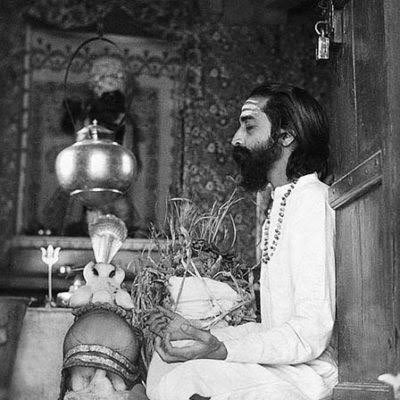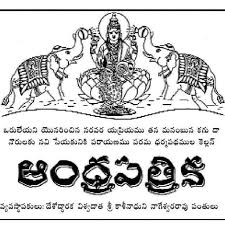“The nation, that has no consciousness of its past, has no future” - Vinayak Damodar Savarkar.
“The Indian War Of Independence Of 1857” by AN INDIAN NATIONALIST.
“In what other history is the principle of love of one’s religion and love of one’s country manifested more nobly
“The Indian War Of Independence Of 1857” by AN INDIAN NATIONALIST.
“In what other history is the principle of love of one’s religion and love of one’s country manifested more nobly

than in ours? However much foreign and partial historians might have tried to paint our glorious land in dark colours, so long as the name of Chitore has not been erased from the pages of our history, so long as the names of Pratapaditya and Guru Govind Singh are there, so long
the principles of Swadharma and Swaraj will be embedded in the bone and marrow of all the sons of Hindusthan! They might be darkened for a time by the mist of slavery—even the sun has its clouds —but very soon the strong light of these self-same principles pierces through the 



mist and chases it away.”
Remember this, Savarkar was only 24 when he produced ‘The Indian War of Independence – 1857’ a voluminous work, running over 550 pages in its English edition. Savarkar, through its four parts titled ‘The Volcano’, ‘The Eruption’, ‘The Conflagration’
Remember this, Savarkar was only 24 when he produced ‘The Indian War of Independence – 1857’ a voluminous work, running over 550 pages in its English edition. Savarkar, through its four parts titled ‘The Volcano’, ‘The Eruption’, ‘The Conflagration’
and ‘Temporary Pacification’, effectively challenged and convincingly changed the colonial narrative when he highlighted and explained, “Never before were there such a number of causes for the universal spreading of these traditional and noble principles as there were in 1857. 



These particular reasons revived most wonderfully the slightly unconscious feelings of Hindusthan, and the people began to prepare for the fight for Swadharma and Swaraj.”
Savarkar searched for the prime motive,
“What, then, were the real causes and motives of this Revolution?”
Savarkar searched for the prime motive,
“What, then, were the real causes and motives of this Revolution?”
asked Savarkar. “What were they that they would make thousands of heroes un-sheath their swords and flash them on the battlefield? What were they that they had the power to brighten up pale and rusty crowns and raise from the dust-abased flags? What were they that for them men
by the thousand willingly poured their blood year after year? What were they that Moulvies preached them, learned Brahmins blessed them, that for their success prayers went up to Heaven from the mosques of Delhi and the temples of Benares?”
What was accepted as Gospel Truth
What was accepted as Gospel Truth
because of the British historical narrative was demonstrated and proved false by a youthful challenger V D Savarkar.
Savarkar’s introduction sets the pace and tone: “I found to my great surprise the brilliance of a War of Independence shining in “the mutiny of 1857.”
Savarkar’s introduction sets the pace and tone: “I found to my great surprise the brilliance of a War of Independence shining in “the mutiny of 1857.”
His words sparkle with the clarity of a crusader. “The spirits of the dead seemed hallowed by martyrdom, and out of the heap of ashes appeared forth sparks of a fiery inspiration.”
Savarkar was conscious of time and anniversaries, It was in this die-hard spirit of patriotism,
Savarkar was conscious of time and anniversaries, It was in this die-hard spirit of patriotism,
with a passionate love for the Motherland and the crusading call of a revolutionary that he wrote his voluminous work. It was written in Marathi and was titled Atthharahasau Sattavanche Swatantrya Samar.
The past of a nation was to be claimed & reaffirmed, but as Savarkar wrote
The past of a nation was to be claimed & reaffirmed, but as Savarkar wrote
“how to use it for the furtherance of its future. The nation ought to be the master and not the slave of its own history.”
Savarkar spent months studying historical accounts of the 18th and 19th centuries, exploitation and ruthless subjugation of the sub-continent by British
Savarkar spent months studying historical accounts of the 18th and 19th centuries, exploitation and ruthless subjugation of the sub-continent by British
He read John W Kaye’s ‘A History of the Sepoy War in India (3 volumes) & George B Malleson's History of Indian Mutiny.
Besides, he dug into accounts of officers and administrators like Charles Ball, Dr Alexander Duff, Sir JH Grant, Holmes, and Thomas Lowe, to name just a few.
Besides, he dug into accounts of officers and administrators like Charles Ball, Dr Alexander Duff, Sir JH Grant, Holmes, and Thomas Lowe, to name just a few.
Savarkar termed their writing as misleading, and unjust about the Revolutionary War. “Most of them have written history in a wicked and partial spirit. Their prejudiced eye could not or would not see the root principle of that Revolution,”.
“Is it possible, can any sane man
“Is it possible, can any sane man
maintain, that all-embracing Revolution could've taken place without a principle to move it? Could that vast tidal wave from Peshawar to Calcutta have risen in flood without a fixed intention of drowning something by means of its force? Could it be possible that the sieges of
Delhi, the massacres of Cawnpore, the banner of the Empire, heroes dying for it, could it ever be possible that such noble and inspiring deeds have happened without a noble and inspiring end?”.
Italian nationalist-thinker Guiseppe Mazzini had a great influence over Savarkar,
Italian nationalist-thinker Guiseppe Mazzini had a great influence over Savarkar,
Mazzini’s views on nation, nationhood, nationalism, and republicanism were building blocks of Savarkar’s ideas.
Savarkar identified the causes and motives as the great principles of ‘Swadharma and Swaraj’,
he researched the early 19th century and how Bharat had come under the
Savarkar identified the causes and motives as the great principles of ‘Swadharma and Swaraj’,
he researched the early 19th century and how Bharat had come under the
sway of the British East India Company, it was religion which was in peril, in danger.
He wrote, “In the thundering roar of ‘Din, Din,’ which rose to protect religion, when there were evident signs of a cunning, dangerous, and destructive attack on religion dearer than life,
He wrote, “In the thundering roar of ‘Din, Din,’ which rose to protect religion, when there were evident signs of a cunning, dangerous, and destructive attack on religion dearer than life,
and in the terrific blows dealt at the chain of slavery with the holy desire of acquiring Swaraj, when it was evident that chains of political slavery had been put round them and their God-given liberty wrested away by subtle tricks—in these two, lies the root-principle of the
Revolutionary War.”
Even before ‘The Indian War of Independence – 1857’ was completed in 1909, its entry into India was banned by the Government before its publication could be organized! The ban was finally lifted by the Congress Government of Bombay in May 1946.
Have you all
Even before ‘The Indian War of Independence – 1857’ was completed in 1909, its entry into India was banned by the Government before its publication could be organized! The ban was finally lifted by the Congress Government of Bombay in May 1946.
Have you all
noticed that Congress removed Swadharma and kept only Swaraj, Congress was under Gandhi and Motilal Nehru then. #JustSaying.
Credit to Raju Mansukhani, Financial Express.
#Swadharma
#Swaraj
#VeerSavarkar
#VANDEMATARAM
Credit to Raju Mansukhani, Financial Express.
#Swadharma
#Swaraj
#VeerSavarkar
#VANDEMATARAM
• • •
Missing some Tweet in this thread? You can try to
force a refresh

 Read on Twitter
Read on Twitter















